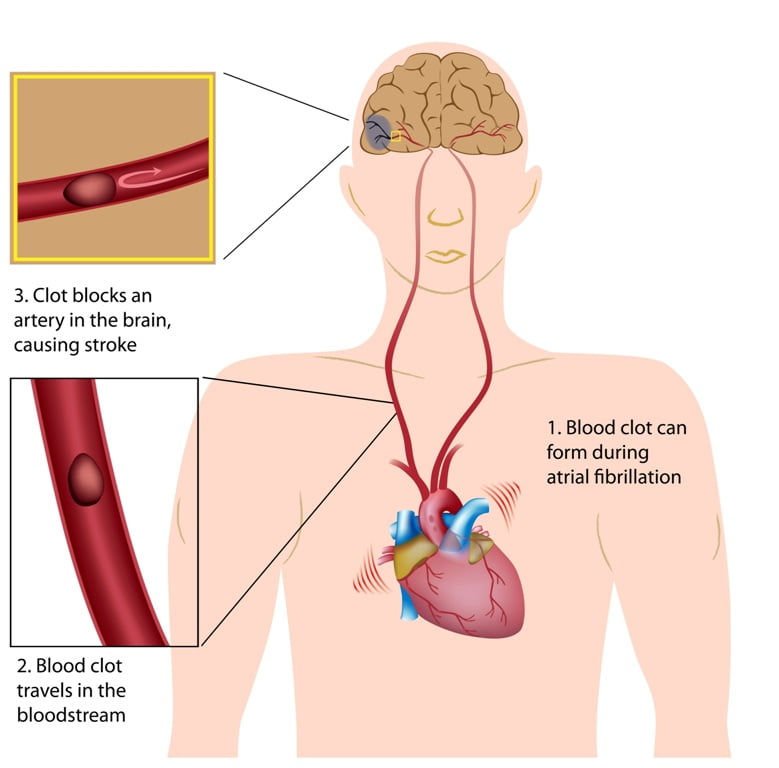Alcohol Withdrawal Syndrome and its Symptoms
- Updated on: Nov 7, 2024
- 7 min Read
- Published on Aug 20, 2019

What is Alcohol Withdrawal?
Alcohol withdrawal or alcohol withdrawal syndrome (AWS) is the name for the symptoms that occur when a heavy drinker suddenly stops or considerably reduces his alcohol intake. With AWS, a person may experience a combination of physical and emotional symptoms, ranging from mild anxiety and fatigue to nausea. Some common symptoms of AWS are as severe as hallucinations and seizures. In most extreme cases, AWS can be life-threatening. Alcohol withdrawal is the name given to changes that undergo in the body when a person suddenly stops drinking after a prolonged and heavy alcohol use. Most common alcohol withdrawal symptoms are trembling (shakes), insomnia, anxiety, and other physical and mental symptoms.
Alcohol intake has a slowing effect (also called a sedating effect or depressant effect) on the brain. In a heavy and long-term drinker, the brain is almost continually exposed to the depressant effect of alcohol. With time, the brain adjusts to compensate for the effect of the alcohol by producing certain naturally stimulating chemicals (such as serotonin or nor epinephrine) in larger quantities than normal. Now, if the alcohol is withdrawn suddenly, the brain acts like an accelerated vehicle that has lost its brakes. Most symptoms of alcohol withdrawal occur due to over stimulation of the brain.
Alcohol withdrawal often results in a serious condition called as delirium tremens (DTs). DTs are the most dangerous form of alcohol withdrawal that occurs in about 1 out of every 20 people who have withdrawal symptoms. In delirium tremens, the brain is unable to smoothly readjust its chemistry after alcohol is stopped. This creates a state of temporary confusion and also leads to dangerous changes in the way our brain regulates the circulation and breathing. As a result, body’s vital signs such as heart rate or blood pressure can change dramatically or unpredictably, creating a risk of heart attack, stroke or death.
What Causes Alcohol Withdrawal Syndrome?
Excessive drinking of alcohol excites and irritates the nervous system. Regular intake of alcohol makes the body dependent on alcohol with time. As a result, central nervous system can no longer adapt easily to the lack of alcohol. Therefore, if a person stops drinking alcohol suddenly or significantly reduces the amount of alcohol intake, it can cause alcohol withdrawal syndrome (AWS). Different factors cause an alcohol withdrawal. When a person drinks, alcohol is broken down by an enzyme in liver. This process helps body to get rid from alcohol through urine. However, if this alcohol is not metabolized by the body, it is absorbed by other parts of body, like brain. When alcohol affects brain, a person may experience feelings of happiness and relaxation. An excessive amount of alcohol around the brain can lead to symptoms of drunkenness like slurred speech, difficulty walking and memory lapses. However, because chronic drinking affects the tolerance, body will crave more alcohol so as to produce the same feelings.
Alcohol consumption suppresses certain neurotransmitters in brain due to which a person feels at ease after drinking. When a person quits drinking, the neurotransmitters are no longer repressed by alcohol. This results in hyper excitability which is the reason why withdrawal symptoms affect differently from alcohol consumption.
Alcohol withdrawal side effects vary among different people. Most of the people are hesitant to quit drinking because of the thought of uncomfortable withdrawal symptoms. However, alcohol addiction treatment specialists can provide prescription medications which help in relieving the pain. By reducing withdrawal symptoms, a person will be able to focus on getting better.
Alcohol Withdrawal Symptoms
The signs and symptoms of alcohol withdrawal may appear anywhere from six hours to a few days after the last drink. The symptoms may worsen over few days, and some milder symptoms may persist for several weeks in some people. A person has reached a state of alcohol dependence, when his body experiences alcohol withdrawal symptoms even when there is no alcohol in his system. Withdrawal symptoms usually occur during detox, a natural process in the body that removes toxins from the system.
Withdrawal occurs because continued and excessive alcohol consumption eventually interferes with the brain’s normal functions and disrupts neurotransmitters. The primary neurotransmitter which aids in the production of feelings like relaxation is gamma-amino butyric acid (GABA). Besides, GABA also helps in producing endorphins in the brain, which creates a sense of well-being. Excessive alcohol consumption causes a GABA imbalance in the brain, resulting in negative physical and mental symptoms of alcohol withdrawal. Over consumption of alcohol also affects dopamine, the neurotransmitter linked to the body’s reward system. This pleasure center regulates body’s energy, enjoyment and motivation. Besides, dopamine also supports body’s sense of attention, motor coordination, cognition and mood. Alcohol consumption releases dopamine, producing some of the happy feelings addicts crave. As the body begins to build a higher tolerance to alcohol, the brain becomes completely dependent on the substance for feel-good neurotransmitters. When a long-term heavy drinker suddenly quits drinking, dopamine production also stops, resulting in various physical and psychological withdrawal symptoms.
Common Alcohol Withdrawal Symptoms
Following are some of the common withdrawal symptoms:
Tremors (Shakes)
Tremors usually begin within 5 to 10 hours after the last alcohol drink and usually rise at 24 to 48 hours. Along with tremors (trembling), some people can have a rapid pulse, an increase in blood pressure, rapid breathing, sweating, nausea and vomiting, anxiety or a hyper-alert state, irritability, nightmares or vivid dreams, and insomnia.
Alcohol Hallucinosis
This symptom usually begins within 12 to 24 hours after the last drink, and may last at least two days once it begins. During alcohol hallucinosis, a person hallucinates (sees or feels things that are not real). It is common in people who are withdrawing from alcohol to see multiple small, similar, and moving objects.
Alcohol Withdrawal Seizures
Seizures due to withdrawal may occur 6 to 48 hours after the last drink. It is common for several seizures to last more than several hours. The risk peaks at 24 hours.
Delirium Tremens
Delirium tremens commonly begins 2 to 3 days after the last alcohol drink, but it may be delayed more than a week. Its high intensity is usually 4 to 5 days after the last drink. This condition causes dangerous shifts in breathing, circulation and temperature control. It can lead to rapid heart beating, increase in blood and dangerous dehydration. Delirium tremens also can temporarily decrease the amount of blood flow to the brain. Symptoms associated with delirium tremens include:
- Confusion
- Disorientations
- Stupor or loss of consciousness
- Nervous or angry behavior
- Irrational beliefs
- Soaking sweats
- Sleep disturbances and hallucinations
You may be at an increased risk for delirium tremens if you:
- Are middle aged or a senior citizen
- Have experienced seizures during previous alcohol withdrawal
- Have some other mental illness
- Have abnormal liver function
- Experience intense alcohol cravings
- Have abused alcohol for a longer period of time
- Have experienced delirium tremens before
Delirium tremens can be difficult to diagnose, as some of its symptoms are similar to those of acute alcohol withdrawal. However, acute alcohol withdrawal is not deadly, while alcohol withdrawal delirium can be dangerous in up to 15 % of cases. Delirium tremens often require advanced pharmacotherapy, and in extreme cases may even require a stay in a hospital’s intensive care unit.
Who is at Risk for Alcohol Withdrawal Syndrome (AWS)?
People who are addicted to alcohol or drink heavily on regular basis are at a high risk of AWS. Alcohol withdrawal syndrome is more common in adults, however children and teenagers who drink excessively may also experience the symptoms. People are also at risk for AWS if they’ve previously had withdrawal symptoms or needed medical detox for a drinking problem. While detox programs are very important, when it comes to heavy drinking (and it’s the same for heavy alcohol use), it can’t be “cold turkey” or sudden. In fact, that does significantly more damage and can put them at risk. So, that’s why it needs to be a supervised detox with medical professionals.
The Centers for Disease Control and Prevention Trusted Source have defined heavy drinking as more than 8 drinks per week for women and more than 15 drinks per week for men. The following are the equivalent of one drink:
- 1.5 ounces of distilled spirits or liquor, including gin, rum, vodka, and whiskey
- 5 ounces of wine
- 8 ounces of malt liquor
- 12 ounces of beer
Binge drinking is one of the most common forms of heavy drinking. For women, it is defined as 4 or more drinks in one sitting while for men, it is defined as 5 or more drinks in one sitting.
How is Alcohol Withdrawal Syndrome Diagnosed?
For diagnosing alcohol withdrawal syndrome, doctors will review your medical history, ask about your symptoms, and conduct a physical exam. Some signs your doctor will look for include:
- Hand tremors
- An irregular heart rate
- Dehydration
- Fever
The Clinical Institute Withdrawal Assessment of Alcohol (CIWA-Ar) is a series of questions used to measure AWS in alcoholic people. Your doctor may use this test to diagnose AWS and to determine the severity of your symptoms. The scale measures the following 10 symptoms:
- Agitation
- Anxiety
- Auditory disturbances
- Clouding of sensorium, or the inability to think clearly
- Headache
- Nausea and vomiting
- Paroxysmal sweats, or sudden, uncontrollable sweating
- Tactile disturbances
- Tremor
- Visual disturbances
The Questions your doctor may ask include:
- Who am I?
- What day is this?
- Does it feel like there is a band around your head?
- Do you feel sick to your stomach?
- Do you feel bugs crawling under your skin?
Alcohol Withdrawal Syndrome vs. a Hangover
Although some of the symptoms of alcohol withdrawal syndrome are similar to a hangover, but they are two different conditions and both of them have different causes. A hangover occurs when a person drinks excessive alcohol at one time. Alcohol withdrawal syndrome occurs when an alcoholic person having AHS stops or suddenly decreases his alcohol intake.
Treatment of AHS
People with severe vomiting, seizures or delirium tremens, can be safely treated in a hospital. For delirium tremens, treatment in an intensive care unit is often required. In an ICU, a patient’s heart rate, blood pressure, and breathing are monitored closely. In case of any emergency, life-support (such as artificial breathing by a machine) may be needed. Medicines called benzodiazepines can decrease alcohol withdrawal symptoms. Commonly used medicines belonging to this group include chlordiazepoxide (Librium) and lorazepam (Ativan).
Most alcohol abusers with withdrawal symptoms have deficiency of several vitamins and minerals like folate, thiamine, magnesium, zinc and phosphate and therefore can benefit from nutritional supplements.
Outlook for Alcohol Withdrawal Syndrome
Most people with AWS recover completely. If an alcoholic person stops drinking, gets treatment, and is otherwise healthy, the outlook is usually good. However, some symptoms like sleep disturbances, irritability, and fatigue may continue for months. If AWS has advanced to delirium tremens, it can be life-threatening. People with severe symptoms of AWS should seek immediate medical attention. The sooner one begins treatment, the better are his chances of avoiding life-threatening complications.
Alcohol withdrawal can be particularly difficult for some people, and it may be the case that some intervention is required. Checking into an Alcohol Rehab center can offer a safe and supportive environment that is free from stressors and can help you focus on recovery. In addition, they provide medical supervision and support, including managing withdrawal symptoms and ensuring that the physical effects of alcohol addiction are handled safely and comfortably.
Various forms of therapy are available, including counseling and education on healthy coping mechanisms to prevent relapse. This may be just what is needed to manage your alcohol withdrawal symptoms and help you on the right path to recovery.
Prevention of Alcohol Withdrawal Syndrome
The most effective way to prevent alcohol withdrawal syndrome is to stop drinking or drinking only in limited or moderate quantities. Moderate drinking is officially defined as 1 drink or less per day for women and 2 drinks or less per day for men. However, if a person already has alcohol use disorder, he can avoid some of the withdrawal symptoms by speaking to a doctor about safe withdrawal.












